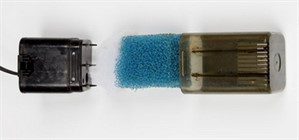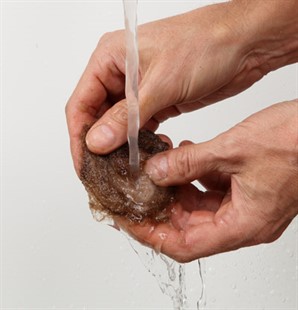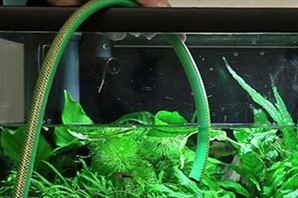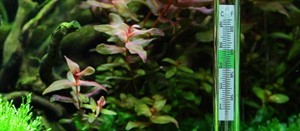The pump and filter must create water circulation in the aquarium, clean the water for fine particles and create the micro biology, that brings the aquarium in a biological balance and by that makes it stable.

The pump consists of a small, electrically-driven propeller that pumps the water around. The capacity is stated in litres per hour. We recommend that the water is changed 3-5 times per hour (150L aquarium - capacity 450 to 750 litres per hour) in order to achieve a good cleaning and not least to ensure the water circulation in the aqaurium.

The filter is often installed as an integrated part, in front of the pump. The filter consists of a layer of very fine cotton wool (often made of a plastic material), that catches the fine particles and therefore must be rinsed manually from time to time. Behind or below this layer, you will find the coarse material (made of plastic or ceramics) which creates a large surface, where the micro biology can assume definite form in the streaming water. Active materials can also be added (e.g. crushed lava and organic coal), which may have an impact on the chemistry of the water.

The pump and filter can be purchased for installation inside the aquarium (internal) or installation outside the aquarium (external) e.g. in a cupboard below. Some aquariums have a built-in filter and pump in the back wall or corner panel.
Regardless of which filter you use, the filter material must be cleaned regularly (once a month or a little more rarely). This is done by washing the filter sponge under lukewarm water; make sure it is not too hot, as this will kill the useful bacteria. If your filter uses cotton wool, you only need to change the cotton wool.
Water change
The purpose of changing the water in the aquarium is to remove waste products and surplus of nutrients accumulating in the water. These substances come from feeding, excrements, dead material and fertilizer and may cause an imbalance in the aquarium.
During the start-up, the aquarium is especially vulnerable towards the accumulation of waste products and nutrients. Up to 50% change of water twice per week in the first 3 weeks ensures clean water. Later when a biological balance is achieved in the aquarium, the aquarium is less vulnerable towards accumulation. Therefore, a weekly change of water of approx. 30% is adequate, and during holidays, the aquarium will also be able to handle 2-3 weeks without water change.
 This is how it is done:
This is how it is done:
1) Clean the glass with a soft sponge and/or a squeegee.
2) Switch off the pump and heater.
3) Have a bucket ready, into which the water can run (e.g. directly into the outlet).
4) Put the other end of the hose into the aquarium and suck! After that, the siphon principle will do the rest. A piece of garden hose can easily be used.
5) Add fresh water from the cold tap either with a hose directly from the tap or with a large water jug. It is important that the water is poured into a saucer or something similar in order to avoid that the gravel whirls up.
6) Switch on the pump and heater again and check that the pump is running (it often needs help to get started, if it has sucked in air).
Here is our video about easy water change.
Temperature
The temperature in the aquarium is decisive for the metabolism of the animals and plants - and by that for their well-being. Too low temperatures reduce the life processes while too high temperatures increase their pace. Both are harmful and the temperature must therefore be controlled and regulated.

There are several heat sources in the shape of e.g. cables in the ground layer or heaters (e.g. integrated in the pump). Moreover, all traffic, e.g. light sources and pump, liberates heat to the water, just as the room temperature has a great impact on the water temperatute in the aquarium. A thermostat in the heat source is necessary, so that the required temperature in the aquarium can be maintained. There are cooling devices which correspondingly can reduce the temperature.
Most of Tropica's plants thrive at 22-24 degrees (which is the most frequently recommended temperature for aquariums). By higher temperatures, e.g. for the sake of the fish, only a limited selection of plants can be used. By increasing temperatures, the amount of oxygen in the water is reduced, which is harmful to the fish, and most of the plants will not thrive. The algae may however generally benefit from this and will indeed thrive, and just a couple of days with higher tempetatures can produce plankton and thread algae in the aquarium.